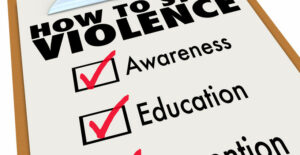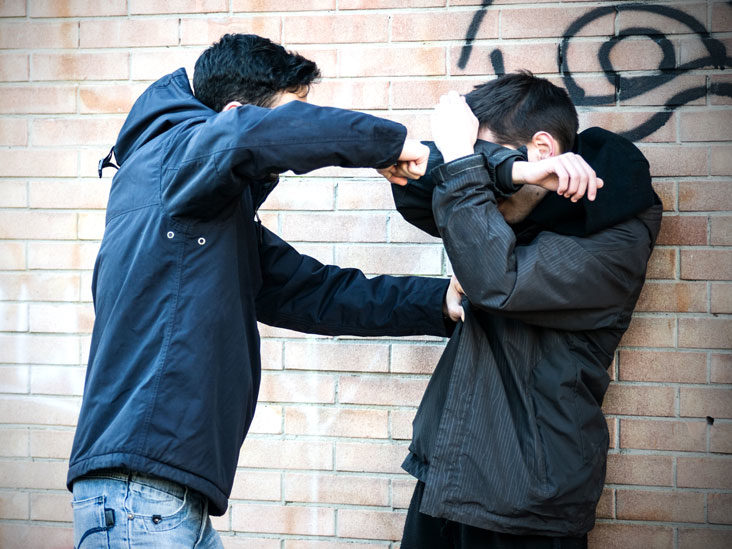Most people have violent tendencies and, in most cases, it is considered to be unhealthy. It can sometimes be an outlet for people who feel like they don’t have any other way to express themselves. There are many ways that we can come across violence including through the media or by witnessing an act of violence. The more we talk about it and try to understand the issue, the less likely we will be to resort to this type of behavior ourselves.
Contents
Understanding Violence

Violence can be defined as any physical or emotional act that causes harm to another person. It can take many different forms, such as verbal abuse, sexual assault, or homicide. It can occur anywhere, from the home to the workplace to the street.
Violence has a devastating impact on individuals and society as a whole. It can cause physical injury, psychological trauma, and even death. It also leads to increased rates of crime and social disorder.
While there is no one cause of violence, there are certain factors that can increase the risk of it occurring. These include exposure to violence in the home or at work, history of victimization or aggression, and substance abuse.
There are many ways to address violence, from policies to individual actions. We can all help reduce violence in our community by showing respect for ourselves and others, learning effective methods of conflict resolution, and refusing to tolerate violent behavior wherever we see it.
What Increases Violence Tendencies?
There are a number of reasons why people may be more likely to resort to violent behavior than others. Some of these reasons may include:

- Exposure to violence
- History of abuse or neglect
- Family conflict
- Mental health issues
- Substance abuse issues
If you are concerned that someone in your life may be more likely to resort to violent behavior, it is important to reach out for help. There are a number of resources available to help both the person struggling with violent behavior and those affected by it.
There are many factors that can increase the risk of someone resorting to violence. These include exposure to violence in the home or at work, history of victimization or aggression, and substance abuse.
Exposure to violence can have a damaging effect on individuals and can cause them to act out violently themselves. This can be seen in cases of child abuse, where children who are abused are more likely to abuse their own children when they grow up.
Similarly, people who work in environments where violence is common are more likely to become violent themselves. This can be due to the fact that they are constantly exposed to violence or because they may feel like they need to prove themselves in a violent environment.
Finally, substance abuse can increase the risk of violence occurring. This is especially true when it comes to alcohol abuse, which has been linked to approximately 41% of violent crimes committed in the United States.
Preventing Violence

To prevent violent behavior from occurring, it’s important for us all to learn healthy conflict-resolution skills and model them appropriately for children. This can help to prevent violence from happening not just in the present but also in the future.
By teaching children about appropriate ways of dealing with strong emotions, we can set them up for success throughout their lives. We should also model good behavior ourselves by controlling our own anger and learning how to deal with difficult situations without resorting to violence.
We all have the capability to act violently, but there are ways that we can work towards preventing this from happening. The first step is being aware of when it is likely to occur and then making a plan for how you will deal with it.
If possible, avoid letting yourself get into dangerous situations in which violence may be more likely to occur. This might mean giving up activities like gang involvement, drug dealing, and high-risk sports.
If you find yourself in a situation where violence is likely to occur, mentally prepare yourself for it by talking yourself through the steps that you’ll need to take. If possible, try to place some physical distance between yourself and the source of the threat and avoid people who you believe may be dangerous.
When we fail to take steps to prevent violence, we put ourselves and others at risk for experiencing it. It’s important that we all do what we can to show respect for other human beings and their lives.
Mental Health And Violent Tendencies
Mental health issues can be a major factor in violent tendencies. Some of the most common mental health issues that can contribute to violent behavior include:

- Schizophrenia
- Bipolar disorder
- Major depression
- Post-traumatic stress disorder
- Borderline personality disorder
While generally not caused by mental illness alone, violent tendencies can be a symptom of these and other serious conditions. It’s important for anyone struggling with violence to get help as soon as possible. Doing so may save both the life of the sufferer and those around them.
Family Conflict Can Lead To Violent Tendencies- Family conflict can have a number of effects on people. Violent tendencies may be one result of an unhealthy family dynamic.
Mixing Substance Abuse And Violent Tendencies- Many people struggling with substance abuse issues also struggle with violent urges. These two problems go hand in hand as both are caused by the same chemical imbalances in the brain. Mixed with the proper medication, substance abuse treatment can help people avoid violent behavior.
Many People Are Affected By The Issue Of Violent Tendencies. While it is common to imagine violence as an act committed by one person against another, family members and friends can be deeply affected by violent incidents. It’s important for those around someone struggling with violence to get help for themselves.
Ways To Reduce Amount Of Violence In Society

There are a number of ways that we can work to reduce the amount of violence in society. Some of these steps include:
- Providing support and resources for those affected by violence
- Increasing access to mental health care
- Working to prevent exposure to violence
- Teaching children how to deal with anger in a healthy way
- Promoting positive relationships within families and communities
- Increasing access to education and opportunities for those at risk of engaging in violent behavior
Violent tendencies i.e. violence and aggression is a common term that can cause people to disregard the seriousness of it as many people believe that violence is only perpetrated by those who are evil or with intent to harm another person. However, violence can be committed by anyone regardless of age, sex, or race and is an issue that affects everyone.
Violence is a broad term as there are many ways that violence manifests itself such as the treatment of others which can be verbal or physical abuse and neglect, self-harm caused by substance abuse and other mental health issues, and gun crime. These different forms of violence affect people beyond those who we may consider being” direct victims” and have a profound effect on family members, friends, etc. In this essay, I will discuss the ways that violence can manifest itself in society and some ideas for how to reduce violence in our communities.
Tips For Preventing Violent Tendencies From Taking Over

There are a number of things that you can do to help prevent violent tendencies from taking over. Here are a few tips:
- Get help. If you’re struggling with violent thoughts or behavior, it’s important to reach out for help. There are a number of resources available, both for the person struggling with violence and those affected by it.
- Seek treatment for any mental health issues you may be dealing with. Mental health issues can be a major factor in violent behavior.
- Stay away from substances. Substance abuse can increase the likelihood of violent behavior.
- Learn how to deal with anger in a healthy way. Angry outbursts can lead to violence if not properly dealt with.
- Promote positive relationships within your family and community. A person who feels supported by their loved ones is less likely to be violent.
- Keep an eye out for at-risk individuals in your community who may benefit from education or vocational training opportunities.
Violence in any form can have a huge impact on a person’s life, whether they are the direct victim of the violence or suffer from its effects in some other way. It can affect lives well beyond that those directly involved, sometimes resulting in lifelong psychological issues due to trauma. With this knowledge, it’s important to create a culture where people feel comfortable talking about violence and know there are resources available when they need help.
Conclusion
Violence can lead to serious consequences for everyone involved. Although it’s true that violence often occurs when someone thinks that there are no other options, you’ll usually feel much better if you try to resolve a conflict without violence or threats of violence. You might benefit from talking with a school counselor, trusted adult, mental health professional, member of the clergy, or even another family member about nonviolent ways to solve problems and decrease stress in your life. In addition, remember that hurting others doesn’t solve conflicts between them and only creates more problems for yourself.
If you are looking for affordable Online Counseling MantraCare can help: Book a trial therapy session


